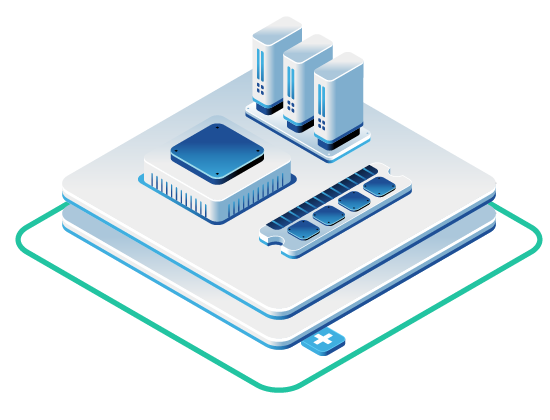
Ready to Take Control of Your Infrastructure Strategy?
OpenMetal’s Hosted Private Cloud gives you the economic predictability of owned infrastructure with the speed and automation of public cloud
Key Takeaways
- Cloud repatriation isn’t regression—it’s the strategic movement of predictable workloads to private infrastructure using the same open source technologies that power hyperscalers
- 21% of cloud workloads have been repatriated, yet net cloud growth continues as organizations match each workload to its economically optimal environment
- Hybrid architecture is the enterprise default, with 70% of organizations using at least one public and one private cloud to balance cost, compliance, and performance needs
- Open source infrastructure (OpenStack and Ceph) enables both strategies without vendor lock-in, giving you portability across any environment
- Your decision framework should evaluate workload predictability, data gravity, operational maturity, and growth trajectory—not ideology about where infrastructure “should” live
The Cloud Maturity Dilemma
Five years ago, your infrastructure decisions seemed straightforward. Move everything to the public cloud, pay for what you use, and let someone else worry about hardware. Today, watching your monthly AWS or Azure bill climb past $150,000 while your workloads remain predictable, that logic feels less convincing.
You’re not alone in this moment of reconsideration. According to the Flexera 2025 State of the Cloud Report, organizations now exceed their cloud budgets by 17% on average, with 84% citing cost management as their top challenge (Flexera, 2025). Meanwhile, 21% of cloud workloads have already been repatriated back to private infrastructure—not because the cloud failed, but because the economics stopped making sense for certain use cases (Flexera, 2025).
This isn’t a story about rebellion against cloud computing. It’s about reaching infrastructure maturity and asking better questions: Which workloads truly benefit from public cloud elasticity? Which ones are paying a premium for flexibility they never use? And what’s the right mix for your organization’s specific gravity of work?
The decision between cloud repatriation and hybrid expansion represents the next phase of cloud strategy—one defined by economic rationality rather than technology ideology.
What Cloud Repatriation Really Means
Cloud repatriation doesn’t mean abandoning modern infrastructure or returning to legacy data centers. It’s the intentional movement of stable, predictable workloads from public cloud environments to private infrastructure that you control—often using the same technologies that power hyperscalers.
When 37signals published their decision to leave the cloud, they weren’t rejecting automation or virtualization. They were rejecting a billing model that charged them over $500,000 annually just for database and search services (DHH, 2023). Their infrastructure needs were predictable. Their growth trajectory was steady. Yet they were paying for the theoretical possibility of wild scaling events that would never materialize.
Modern repatriation strategies use OpenStack and Ceph—the same open source foundations running inside many hyperscaler data centers—to recreate cloud capabilities on owned hardware. This means you keep API-driven provisioning, automated scaling, and infrastructure-as-code workflows. You simply remove the variable pricing layer and regain direct hardware access.
The benefits extend beyond cost. When you run your own infrastructure using open technologies, you gain complete visibility into resource allocation, the ability to tune performance at the hypervisor level, and eliminate the data egress fees that can silently double your public cloud costs. For workloads processing terabytes of data daily—like video rendering, data analytics, or AI training—these factors become financially decisive.
The Case for Hybrid Expansion
Hybrid cloud architecture recognizes a fundamental truth: different workloads have different needs. Not everything belongs in a single environment.
Consider a SaaS application serving global customers. Your core database and application servers might run consistently at 80% capacity year-round—making them ideal candidates for private infrastructure. But your CDN edge nodes, which must scale geographically and handle traffic spikes during product launches, naturally fit the public cloud model. Trying to force both workloads into the same infrastructure type means either overpaying for consistency or underperforming during peaks.
The data supports this approach. Flexera’s 2025 research shows 70% of organizations now embrace hybrid cloud strategies, using at least one public and one private cloud (Flexera, 2025). This isn’t indecision—it’s architectural sophistication.
Hybrid expansion makes particular sense for organizations navigating compliance requirements. Financial services firms, for example, often need to keep customer data in sovereign regions with specific regulatory frameworks, while still wanting access to managed AI services in public clouds. A well-designed hybrid architecture lets you keep sensitive data processing in controlled environments while leveraging cloud-based tools for analytics and inference.
The rise of AI workloads has accelerated hybrid adoption. Gartner predicts that by 2029, 50% of cloud compute resources will be devoted to AI workloads, up from less than 10% today (Gartner, 2025). Many organizations are discovering that training large models makes more sense in private clusters with dedicated GPUs and no egress fees, while inference can scale elastically in public clouds closer to users.
Decision Framework: How to Choose
The choice between repatriation and hybrid expansion isn’t binary—it’s workload-specific. Here’s how to think through your infrastructure strategy:
Start with workload characteristics. Examine your applications through three lenses: predictability, data gravity, and compliance requirements. Highly predictable workloads with consistent resource consumption pay a premium for public cloud flexibility they never use. These are strong repatriation candidates.
Calculate your data movement costs. If your workloads process large datasets and frequently move data between storage and compute, egress fees can exceed your compute costs. Data-intensive workloads like video transcoding, data analytics, and AI training often find that transfer fees represent a significant portion of their total cloud bill—costs that disappear entirely with owned infrastructure.
Evaluate your operational maturity. Running private infrastructure requires expertise in Linux, networking, and storage systems. If your team already manages Kubernetes clusters and infrastructure-as-code pipelines, adding private cloud management is a natural extension. If you’re primarily focused on application development, hybrid might serve you better by keeping some workloads in managed services.
Consider your growth trajectory. 37signals could confidently repatriate because their growth was measurable and predictable. If you’re a three-year-old startup expecting 10x user growth, keeping more infrastructure in public cloud may be wise. But if you’re an established business with steady expansion, owned hardware becomes increasingly attractive.
| Factor | Cloud Repatriation | Hybrid Expansion |
| Cost Model | Fixed hardware costs, predictable | Variable costs across environments |
| Control | Complete root access and tuning | Managed services with some private control |
| Scalability | Bounded by owned hardware | Elastic scaling where needed |
| Complexity | Concentrated operational focus | Multi-environment orchestration |
| Latency | Optimized for specific locations | Global distribution possible |
| Security/Compliance | Full data sovereignty | Mixed models with policy enforcement |
Recognize when hybrid makes sense. If your analysis reveals a mix—some workloads with predictable demand, others with variable scaling, some requiring data sovereignty, others benefiting from global distribution—then hybrid expansion is your answer. The key is matching each workload to its ideal environment rather than forcing everything into one model.
From Cloud Ideology to Cloud Pragmatism
The question isn’t whether cloud computing was the right decision five years ago. For most organizations, it was. The question is whether that same decision still makes sense today, with your current workload profile, operational maturity, and cost structure.
Cloud repatriation and hybrid expansion aren’t opposites—they’re points on the same spectrum of intelligent infrastructure design. Both recognize that “cloud first” was always about the capabilities (automation, elasticity, self-service) rather than the location (someone else’s data center). Once you separate those concepts, the path forward becomes clearer.
Smart organizations are moving past ideology and toward pragmatism. They’re running databases on owned hardware while using cloud-based CDNs. They’re training AI models in private clusters while deploying inference at the edge. They’re keeping sensitive customer data in sovereign environments while leveraging managed services for non-critical workloads.
The common thread? Each workload runs in its economically and technically optimal environment, orchestrated through open platforms that preserve portability.
Building Your Infrastructure Evolution with OpenMetal
Whether you’re exploring cloud repatriation or architecting a hybrid expansion, the underlying challenge remains the same: how do you reclaim control and predictability without sacrificing the speed and automation that made cloud attractive in the first place?
OpenMetal’s Hosted Private Cloud was built to answer this question. By providing fully configured OpenStack and Ceph environments in minutes instead of months, with complete administrative control and fixed-cost pricing, we eliminate the traditional barriers to infrastructure ownership.
Your workloads deserve to run where they make the most sense—technically and economically. OpenMetal gives you the foundation to make those decisions based on your actual needs rather than vendor convenience.
Ready to Take Control of Your Infrastructure Strategy?
Stop paying premium prices for flexibility you don’t use. OpenMetal’s Hosted Private Cloud gives you the economic predictability of owned infrastructure with the speed and automation of public cloud—deployed in under an hour.
Get started today:
- Schedule a technical consultation to map your workloads and calculate potential savings
- Spin up a proof-of-concept environment and see OpenStack performance firsthand
- Download our Cloud Economics Calculator to compare your current spend against fixed-cost private cloud
Read More Blog Posts
Works Cited
- DHH. (2023). “Why We’re Leaving the Cloud.” HEY World. Retrieved from https://world.hey.com/dhh/why-we-re-leaving-the-cloud-654b47e0
- Flexera. (2025). “2025 State of the Cloud Report.” Retrieved from https://info.flexera.com/SLO-WP-State-of-the-Cloud
- Gartner. (2025). “Gartner Identifies the Top Trends Shaping the Future of Cloud.” Gartner Newsroom. Retrieved from https://www.gartner.com/en/newsroom/press-releases/2025-05-13-gartner-identifies-top-trends-shaping-the-future-of-cloud
- International Data Corporation (IDC). (2024). “IDC FutureScape: Worldwide Cloud 2025 Predictions.” Retrieved from https://www.idc.com/getdoc.jsp?containerId=US52640724


































